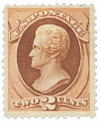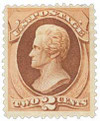
# 135 - 1870 2c Jackson, red brown 'H Grill'
1870-71 2¢ Jackson
National Bank Note Printing
I or H Grill
Issued: April 1870
Quantity issued: 40,000,000 (estimate)
Printed by: National Bank Note Company
Method: Flat plate
Watermark: None
Perforation: 12
Color: Red brown
John Q. Adams Elected In “Corrupt Bargain”
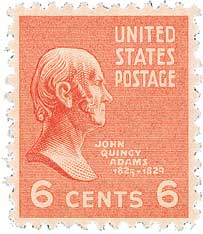
On February 9, 1825, John Quincy Adams was elected President even though he didn’t receive the majority of the electoral vote.
In the years leading up to the election of 1824, the Democratic-Republican Party had won the presidency in six consecutive presidential elections, a period sometimes referred to as the “Era of Good Feelings.” President James Monroe followed the tradition of those before him and chose not to seek a third term. His Vice-President, Daniel D. Tompkins, was unpopular and in poor health, leaving the party’s nomination wide open.
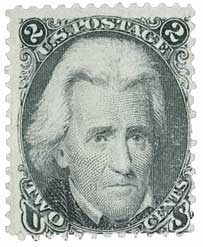
Tensions were high between Monroe’s top advisors, three of whom were running to replace him as President. They were Secretary of State John Quincy Adams, Secretary of War John C. Calhoun, and Secretary of the Treasury William H. Crawford. Other candidates included Speaker of the House, Henry Clay, and Tennessee Senator and war hero Andrew Jackson. Eventually Calhoun dropped his bid for the presidency, but decided for run for Vice-President, which he won.
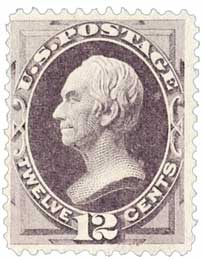
Each of the men running for President had strong support in certain sections of the country: Adams in the Northeast, Jackson in the South, West, and mid-Atlantic, Clay in parts of the West, and Crawford in parts of the East. With so many candidates receiving significant support, none received a majority of the votes.
In the election, which was held between October 26 – December 2, 1824, Jackson received 99 electoral votes, Adams 84, Crawford 41, and Clay 37. Although Jackson had the most votes, he did not have a clear majority, so the decision was left to the House of Representatives.
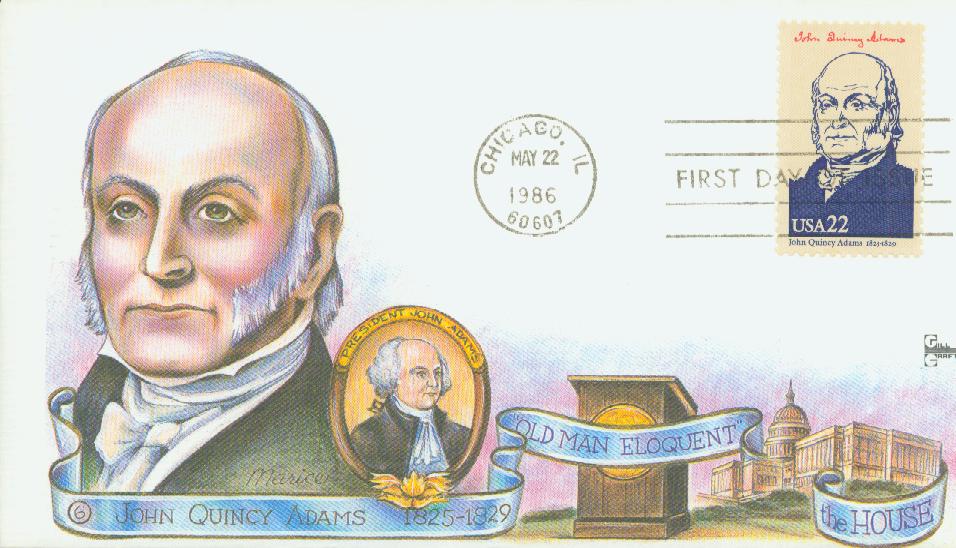
According to the 12th Amendment, the choice was among the top three candidates who had received the most votes (Jackson, Adams, and Crawford). Speaker of the House Henry Clay did not like Jackson, and exclaimed, “I cannot believe that killing 2,500 Englishmen at New Orleans qualifies for the various, difficult, and complicated duties of the Chief Magistracy.” Ideologically, Clay was more aligned with Adams, so he cast his vote for him. Adams went on to win in the House on the first ballot with thirteen votes, while Jackson received seven and Crawford four.
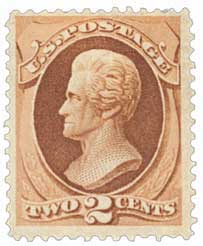
Jackson was shocked. He’d won the most popular and elector votes and expected to ultimately win the election. Just before the results of the House election were released, a former member of Congress anonymously printed a statement in a Philadelphia newspaper accusing Clay of striking a deal with Adams – his vote for the office of secretary of state.
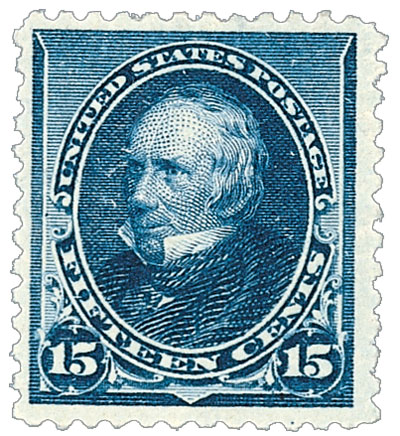
A formal investigation was never made, so it’s never been confirmed whether this was actually the case. However, Adams did offer Clay the position of secretary of state after he was elected. Jackson and his supporters accused the pair of striking a “corrupt bargain.” He maintained that position for the next four years, using it as part of his campaign for the presidency in 1828, which he won by a landslide.
1870-71 2¢ Jackson
National Bank Note Printing
I or H Grill
Issued: April 1870
Quantity issued: 40,000,000 (estimate)
Printed by: National Bank Note Company
Method: Flat plate
Watermark: None
Perforation: 12
Color: Red brown
John Q. Adams Elected In “Corrupt Bargain”

On February 9, 1825, John Quincy Adams was elected President even though he didn’t receive the majority of the electoral vote.
In the years leading up to the election of 1824, the Democratic-Republican Party had won the presidency in six consecutive presidential elections, a period sometimes referred to as the “Era of Good Feelings.” President James Monroe followed the tradition of those before him and chose not to seek a third term. His Vice-President, Daniel D. Tompkins, was unpopular and in poor health, leaving the party’s nomination wide open.

Tensions were high between Monroe’s top advisors, three of whom were running to replace him as President. They were Secretary of State John Quincy Adams, Secretary of War John C. Calhoun, and Secretary of the Treasury William H. Crawford. Other candidates included Speaker of the House, Henry Clay, and Tennessee Senator and war hero Andrew Jackson. Eventually Calhoun dropped his bid for the presidency, but decided for run for Vice-President, which he won.

Each of the men running for President had strong support in certain sections of the country: Adams in the Northeast, Jackson in the South, West, and mid-Atlantic, Clay in parts of the West, and Crawford in parts of the East. With so many candidates receiving significant support, none received a majority of the votes.
In the election, which was held between October 26 – December 2, 1824, Jackson received 99 electoral votes, Adams 84, Crawford 41, and Clay 37. Although Jackson had the most votes, he did not have a clear majority, so the decision was left to the House of Representatives.

According to the 12th Amendment, the choice was among the top three candidates who had received the most votes (Jackson, Adams, and Crawford). Speaker of the House Henry Clay did not like Jackson, and exclaimed, “I cannot believe that killing 2,500 Englishmen at New Orleans qualifies for the various, difficult, and complicated duties of the Chief Magistracy.” Ideologically, Clay was more aligned with Adams, so he cast his vote for him. Adams went on to win in the House on the first ballot with thirteen votes, while Jackson received seven and Crawford four.

Jackson was shocked. He’d won the most popular and elector votes and expected to ultimately win the election. Just before the results of the House election were released, a former member of Congress anonymously printed a statement in a Philadelphia newspaper accusing Clay of striking a deal with Adams – his vote for the office of secretary of state.

A formal investigation was never made, so it’s never been confirmed whether this was actually the case. However, Adams did offer Clay the position of secretary of state after he was elected. Jackson and his supporters accused the pair of striking a “corrupt bargain.” He maintained that position for the next four years, using it as part of his campaign for the presidency in 1828, which he won by a landslide.



